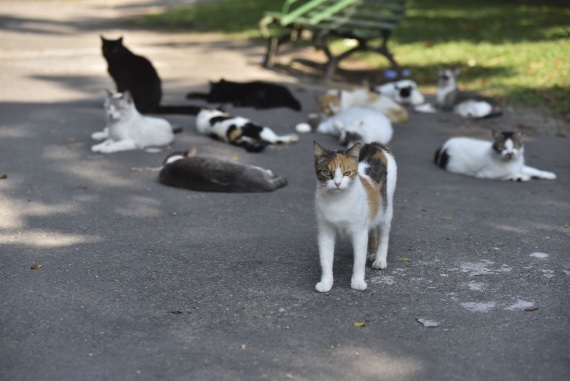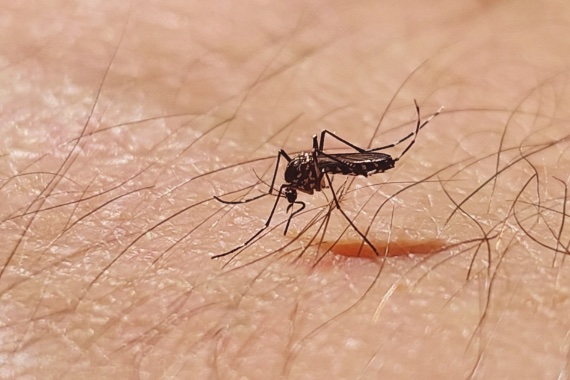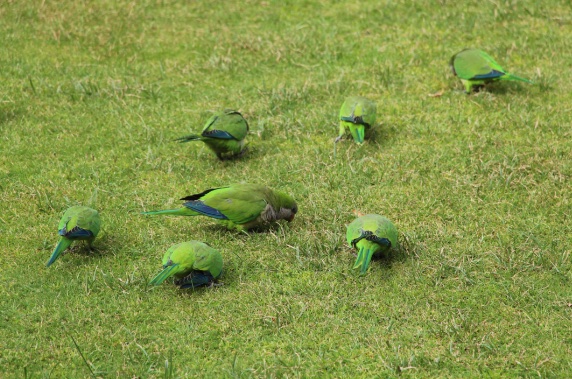In a sense, Homo sapiens is the ultimate invasive species. We left our home in Africa some 70,000 years ago and successfully colonised every inhabitable continent and many island chains, replacing the other archaic humans we encountered and leaving massive ecological changes in our wake. And throughout history, we have brought plants and animals with us on our migrations, often deliberately but sometimes unwittingly. When these non-native species become established and harm the native biodiversity or impact agriculture or human well-being, we call them invasive species. Today, there are more than 17,000 established invasive species, and the rising economic cost of these biological invasions to society over the past half century is estimated at $1.3 trillion, which researchers admit is a gross underestimate.
Species have been migrating between continents and islands since long before humans arrived on the scene. More than 30 million years ago, primates managed to cross the Atlantic from Africa to South America at least twice on floating mats of vegetation and soil (thanks to continental drift, the distance would have been much shorter than it is today). Oceanic dispersal also explains how iguanas reached the Galapagos Islands, how the first rodents arrived in Australia and how lemurs got to Madagascar, among many other examples.
Rats and cats colonise the planet
As humans developed ocean-going vessels, they became unwitting facilitators for species to reach new habitats that often lacked predators or competitors. Two thousand years ago, rat stowaways on Polynesian vessels infested Pacific islands, and during the Age of Exploration rodents were spread across the rest of the globe. Among the most harmful were three rat species that humans introduced to more than 80% of the planet’s archipelagos as they explored the world’s oceans. Rats have been responsible for an estimated 40% to 60% of recorded extinctions of island birds and reptiles.

Another major invasive species we have helped to spread around the world is the domestic cat, which is descended from the African wildcat. Accompanying sailors on their voyages since ancient times to control rodents on ships, cats were given free passage to the farthest reaches of the globe, including many islands, where they have been responsible for at least 14% of global bird, mammal, and reptile extinctions. Today, the world’s hundreds of millions of cats, both domestic and feral, kill billions of birds, mammals and small reptiles every year and threaten many species with extinction, including 124 in Australia.
Small insects with an outsized impact
While “Toms and Jerrys” may be among the most damaging invasive species in terms of biodiversity loss, a much smaller animal—the mosquito—ranks first when it comes to human health and economic costs. The international trade in used tires and ornamental bamboo, whose hollow insides are an attractive environment for mosquitos to lay their eggs, is often blamed for the expansion of invasive mosquitoes around the globe. In recent years, Europe has been colonised by the Asian Tiger, Asian Bush and Yellow Fever mosquitos, which can spread exotic viral pathogens such as dengue, chikungunya and Zika brought to Europe by infected travellers. The worldwide economic cost of invasive mosquitos in the past half century has been estimated at about $150 billion.

Besides mosquitoes, other invasive insects are also having an outsized global impact. The Formosan subterranean termite (Coptotermes formasanus), native to southern China, is one of the most destructive and aggressive termite species in the world. Believed to have been introduced into the USA by military ships carrying supplies from the Pacific after the Second World War, its voracious appetite for all types of wood causes tens of billions of dollars of damage each year. Invasive ants are also on the march worldwide, inadvertently transported around the world by cargo and goods, where they displace native ants, alter ecosystems, harm biodiversity and reduce agricultural yields. A 2022 study put the economic cost of invasive ants from 1930 to 2021 at $52 billion, while the French National Centre for Scientific Research (CNRS) estimates that invasive insects in general cause at least 69 billion euros in damage worldwide each year.
Invasive pets and irresponsible owners
Some invasive species were first sold as exotic pets and then released by their owners. Spain, for example, is now home to 200,000 invasive monk parakeets, forcing cities such as Madrid to cull the birds to reduce their numbers. In Japan, parts of the country are infested with raccoons after a popular anime cartoon series released in the 1970s led to massive imports of the animals from North America as pets. In Colombia, Pablo Escobar’s famous hippos, originally numbering just four, now exceed 150 and have been declared a toxic invasive species by the government.
In Florida’s Everglades National Park, the population of invasive Burmese pythons has soared as pet owners often release them when they grow too large. In fact, the sharp decline in small mammal populations is linked to the voracious appetite of this giant invasive predator, which is unlikely ever to be eradicated.

Another notorious ecological disaster involving snakes occurred shortly after the Second World War on the island of Guam, where the brown tree snake (Boiga irregularis) was accidently introduced, probably as a stowaway in ship cargo. The serpent feasted on the island’s extensive bird and lizard populations, driving as many as ten native bird species to extinction and traumatising the human population. Even today, the forests of Guam are said to be eerily silent due to the absence of birdsong, while the extirpation of insectivorous birds has led to an explosion in the spider population. Today, millions of dollars are spent annually to prevent the snake from spreading to Hawaii.
Invasive marine life
The situation is no better in our rivers, lakes and oceans. Pacific salmon and North American crayfish have been found in Scottish rivers; destructive lionfish from the Indo-Pacific region have invaded parts of the Caribbean and western Atlantic; and in southern Spain, the Strait of Gibraltar is experiencing an “unprecedented case of bioinvasion by marine macroalgae,” where a non-native species of algae has taken hold and is spreading rapidly across the seabed and accumulating on local beaches, affecting biodiversity, fisheries and tourism.

Despite their negative effects, the global problem of invasive species remains poorly known. Their social impact derives mainly from the damage they cause to the economy, such as the health costs of the diseases they transmit, or the loss of forests or crop production due to invasive pests. Less easy to quantify is the damage to ecosystem services caused by the loss of native biodiversity. What is clear, however, is that new invasive species will continue to emerge in the future. Evidence indicates that greater investment in tighter biosecurity measures, proactive surveillance and early detection would help minimise their impact and would be cheaper than waiting for species to become established and spread. As with the climate crisis, an ounce of prevention is worth a pound of cure.
Comments on this publication